Compared to other plants, microgreens are very easy to plant and take care of.
They are low maintenance and do not require constant attention to thrive.
Still, if you grow your own microgreens, you may have wondered at some point if microgreens can regrow after cutting.
Well, some microgreens can regrow after cutting. Out of those, some are relatively easier to regrow than others. That said, the microgreens that regrow easily after cutting are those with larger seeds, such as peas, and more generally, microgreens belonging to the Fabaceae family and Lamiaceae family.
Essentially, microgreens regrow through cell degeneration and photosynthesis. In this article, we will look at 5 microgreens that regrow after cutting.
Even so, feel free to experiment with other microgreens that you like.
5 Microgreens That Regrow After Cutting
| Microgreen | Scientific Name | Conditions for Regrowing |
|---|---|---|
| Pea Shoots | Pisum sativum var. macrocarpon | Leave the first set of leaves with tendrils intact. |
| Kales | Brassica oleracea var. sabellica | Don’t cut the topmost leaf. They require 2 to 4 hours of sunlight per day. |
| Coriander | Coriandum sativum | Keep the temperature below 21 degrees Celsius. |
| Sage | Salvia officinalis | Warm and humid environment. |
| Basil | Ocimum basilicum | Keep it away from frost. Expose it to 8 hours of direct sunlight in a day. |
1. Pea Shoots
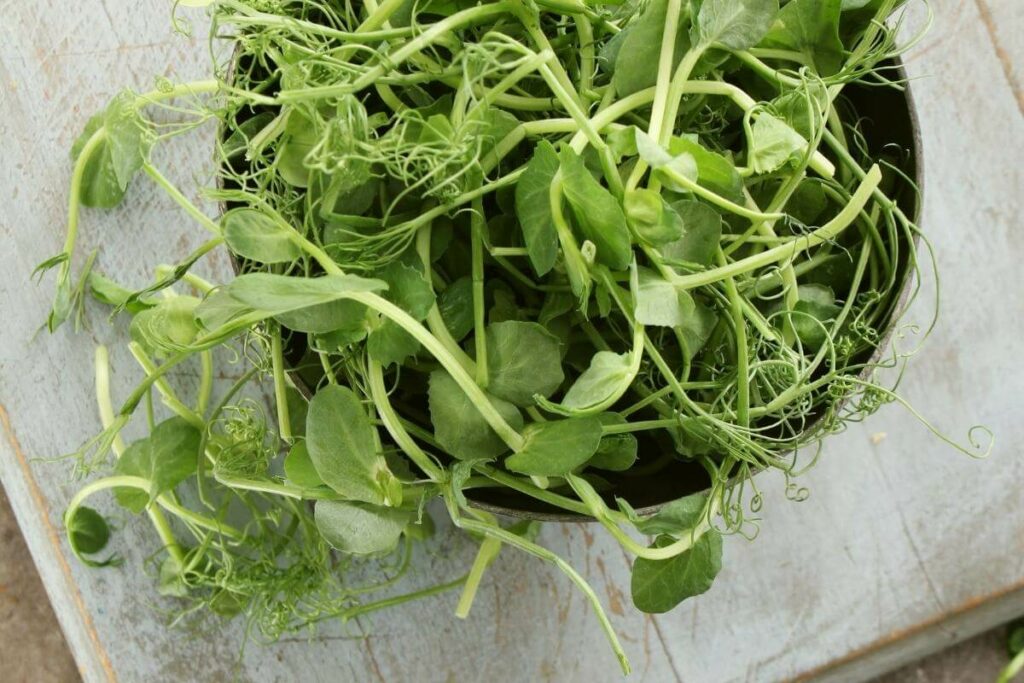
Pea shoots are among the microgreens that regrow after cutting.
They are popular because they are not only delicious but also nutritious. Pea shoots are also known for their nutty flavor.
If you wish to regrow a pea shoot after the first harvest, you will have to be careful with how you cut the plant.
Thus, you want to cut it in a way that the first set of leaves with tendrils remains intact.
This is to ensure that the plant will be able to carry out photosynthesis and acquire the energy to regrow.
Also, see to it that you use clean, sharp objects when cutting the plant to avoid introducing microorganisms that could be harmful to it and delay the process.
Remember: With proper care and maintenance, you can get two to three harvests from a single batch of pea shoots before they start losing taste and flavor.
2. Kales
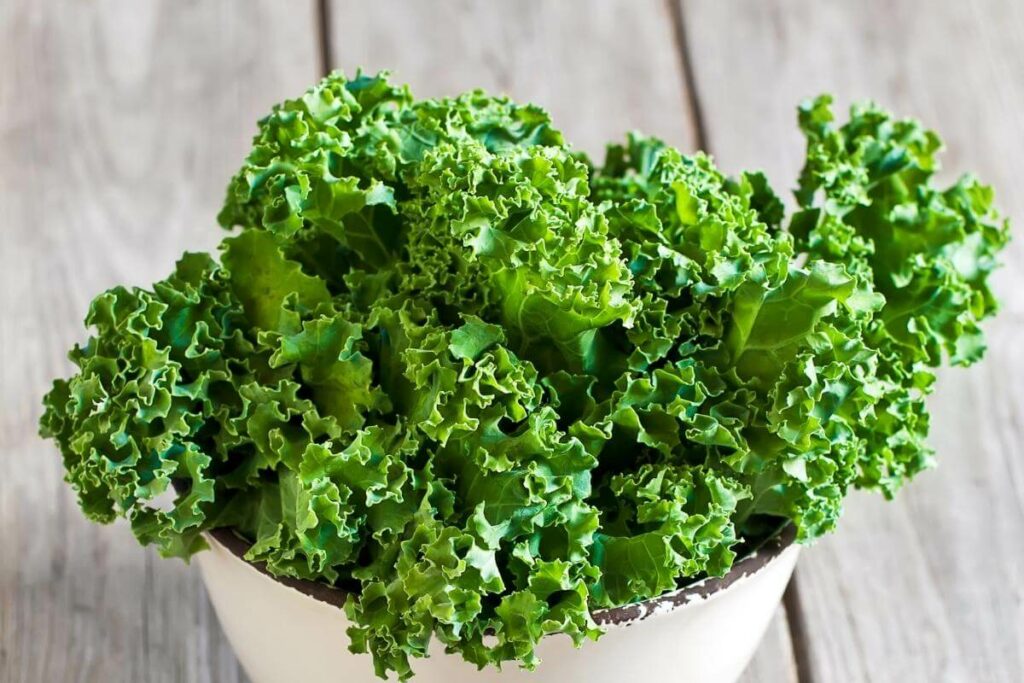
Kales regrow pretty easily under the right conditions.
Essentially, you ought to cut off the leaves that are close to the bottom of the stalk.
While at it, do not touch the topmost leaf as the plant will not regrow without it. This is because the leaf provides the plant with the energy to regrow.
While cutting the leaves, be armed with a sharp knife or scissors to avoid making mistakes.
When done incorrectly, the regrowth process will take much longer than usual. You also want to get rid of older and withered leaves that may delay the growth process.
Additionally, take care not to do the cutting when the plant is too young. Therefore, give it at least six weeks so that the stems and roots are mature enough to survive and support a regrowth.
If you cut the leaves when the plant is still too young, it may die off.
Kales are cold-weather crops that require sunlight to grow.
Therefore, see to it that they are exposed to the sun for two to four hours every day for best results.
3. Coriander
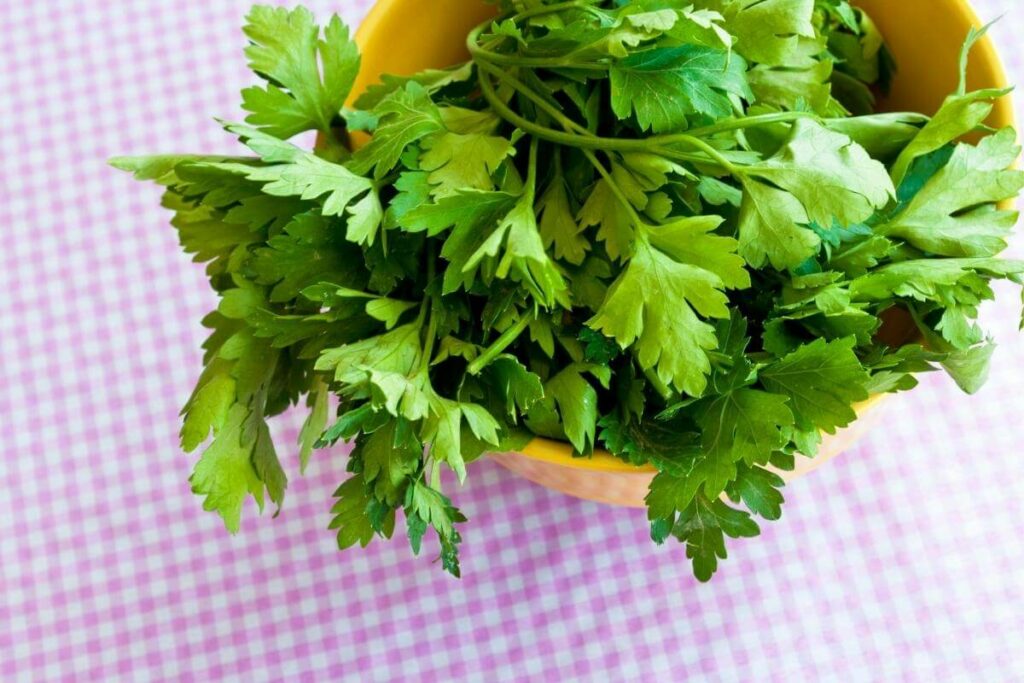
Also known as cilantro, coriander is heavily used in Thai, Mexican and Caribbean cuisines.
While the plant is slow-growing, coriander regrows easily.
When you harvest the micro plant, leave half an inch to an inch of the stem.
This also applies to when you buy it from the grocery store. Then, place the stems in a glass of water and wait until roots emerge.
Once the roots are long enough, plant them in a tray or a wide container that is about 6 inches in depth.
Keep In Mind: Coriander requires a cool environment to grow, so keep the temperatures below 21 degrees Celsius.
4. Sage
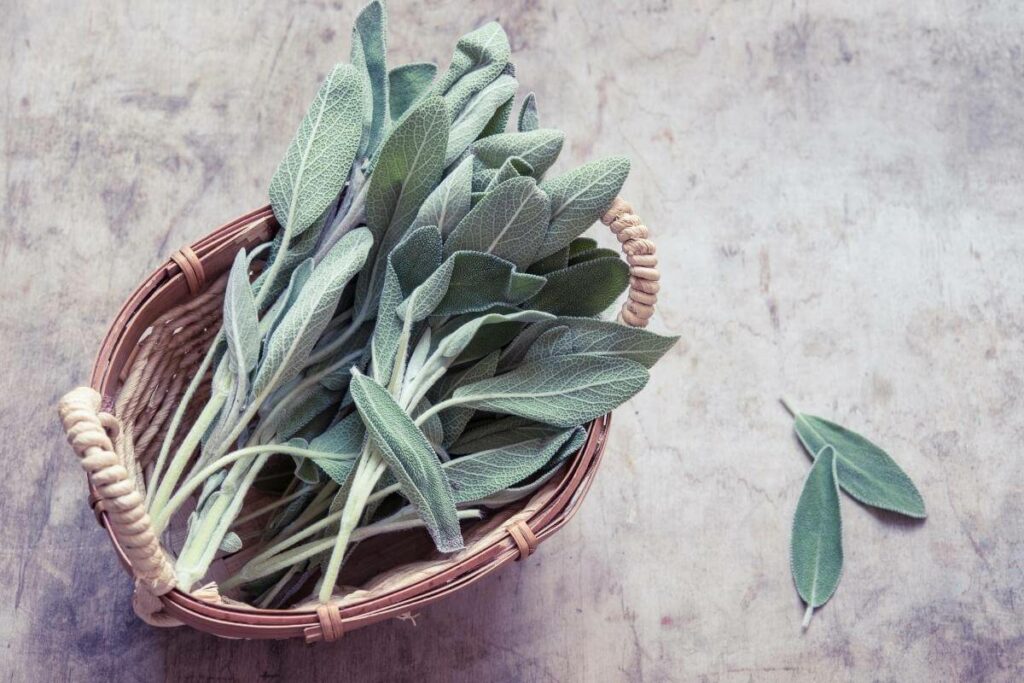
Propagating stage, or growing sage from cuttings, is a slow process that can easily take you up to a year to harvest a new sage plant.
So, you will have to be patient to allow the sage to regrow sufficiently.
To propagate sage, strip the leaves that are on the lower part of the stem, leaving the ones on the top side.
The leaves you leave behind will carry out photosynthesis to provide the plant with the energy it needs to regrow.
Also, leave about two inches of bare stem to act as a base for future roots.
If you want to speed up the process, you could dip the stem into a rooting hormone to enhance growth.
However, this is optional, and you can do without it, especially if you want your sage to grow naturally.
Also, keep in mind that sage grows best in a warm and humid environment.
Better yet, store it in a greenhouse if you have one.
5. Basil
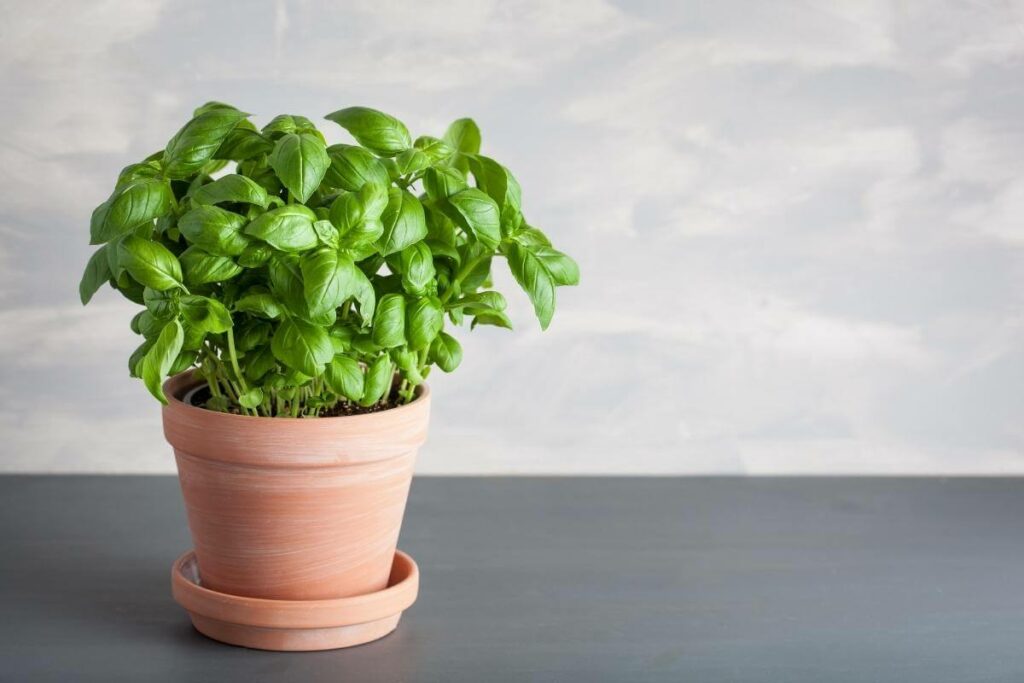
Basil has a spicy clove flavor that is perfect for foods like:
- pasta
- pizzas
- pestos
Therefore, it is pretty popular because, let’s face it, these are foods that everyone loves to indulge in regularly.
Luckily, it is one of the microgreens that regrow easily after cutting. To make this happen, cut a stem that is 4 to 6 inches long.
Then, put the stem in water until new root sprouts.
Ensure that you get rid of leaves on the lower side of the stem so that they do not get submerged into the water and start rotting as a result.
Then, transfer the plant from the water glass to the soil. Keep in mind that basil thrives in heat.
So, when it is cold, you want to keep it under controlled temperatures until the sun comes out again.
During summer, ensure that the plant receives 8 hours of direct sunlight every day.
Get Ready: In about 3 to 4 weeks, your basil will be ready for harvest.
How To Successfully Regrow Microgreens After Cutting
While growing microgreens is pretty simple, regrowing them is comparatively more complicated.
A lot more care needs to be taken to ensure a successful regrowth.
Hence, there are things that you ought to do to minimize the chances of failure.
Cut the Plants at the Right Places
Where you cut the microgreen plays a big role in determining whether it will regrow or not.
Naturally, you want to leave behind parts that encourage and support plant growth, such as the meristem. A meristem differentiates to form new stem tissue.
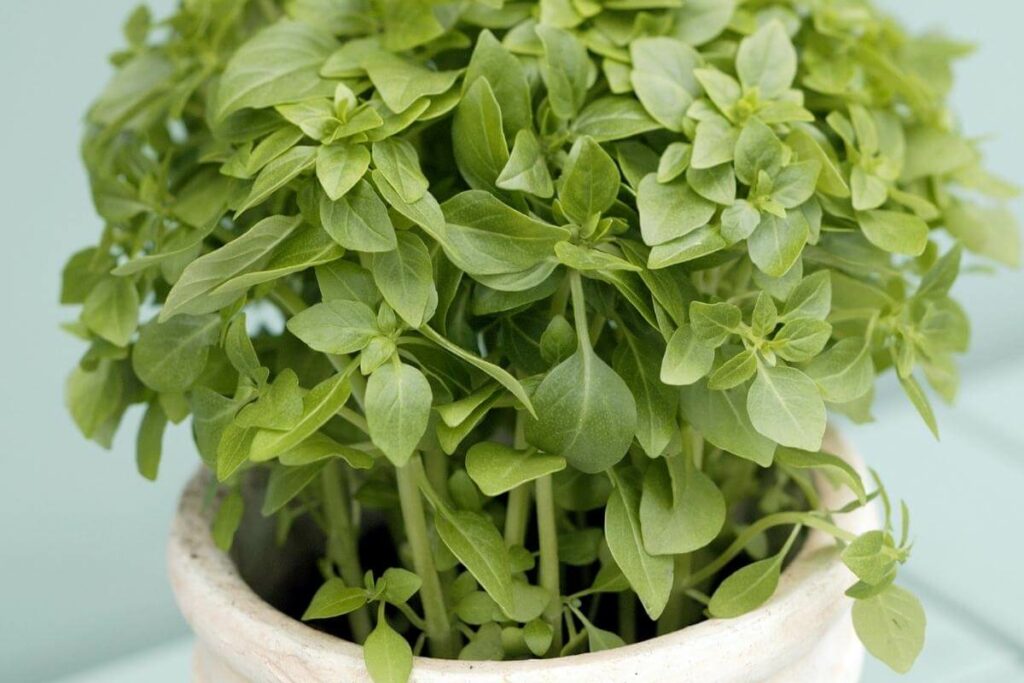
Also, you want to leave the lowest leaves of the plant intact.
This is because they are located at a place that is rich with cell regeneration and, on top of that, perform photosynthesis to provide the energy a plant needs to regrow.
Protect the Plants from Pests and Diseases
Microgreens that have been cut are relatively more susceptible to fungal diseases than those growing naturally from seed.
Therefore, it is important to keep their growing environment super clean.
More Importantly: use sterile tools when cutting them to avoid introducing germs into the plant.
Use Large Pots
Large pots provide enough space for the roots to develop.
Therefore, the plant gains better root structure compared to when it is growing in a limited space.
Final Thoughts
Most microgreens do not regrow after cutting.
However, a few do,- provided the right steps are taken, and proper care is given. Most of the microgreens that regrow after cutting belong to the Fabaceae family and Lamiaceae family, some of which have been discussed in this article.
Regrowing microgreens is a delicate process that requires you to be precise to avoid messing up. For one, you have to be particular with the place you are cutting the plant for regrowing.
Secondly, you should use sharp and sterile tools for precision and avoid the risk of infections, respectively
Related Articles
- How To Grow Cress in Cotton Wool
- How to Grow Chili Plants Faster at Home?
- Arugula Microgreens Vs Arugula
